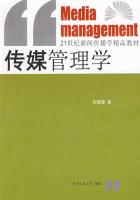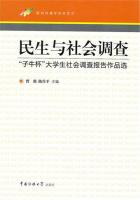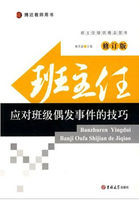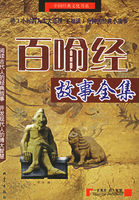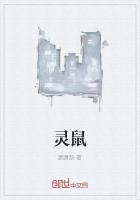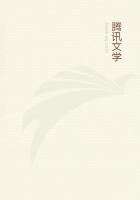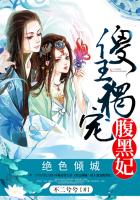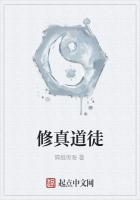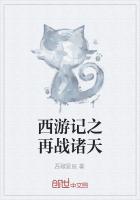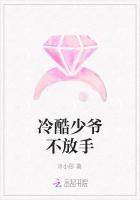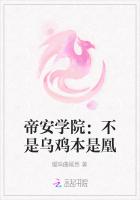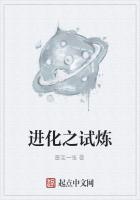Effective Extensive Reading:Principle and PracticeMa Ling
1.Introduction
In the EFL setting,students do not have many opportunities to use English outside of class。Their experience is mostly means to be confined to the classroom where limited time and resources are available。Reading is the primary means to extend their exposure to the target language。Reading skill has been most emphasized in traditional FL teaching,and is still the mainstay of EFL instruction in present day China。To be specific,English instruction at the university level in China is usually the“intensive reading procedure”,which implies close study of short passages,including syntactic,semantic,and lexical analyses and translation into the L1 to arrive at meaning。This,as Alderson and Urquhart(1984)have argued,is not a reading but a language lesson:In other words,when reading,we engage in activities such as recalling word meanings,inferring,drawing conclusions,and so on,but these are all aspects of the act of comprehending。Freeman(1999)suggests that reading is an active,fluent process,which involves the reader and the reading materials in building meaning。
In recent years researchers and teachers involved in foreign language instruction have become increasingly aware of the importance of extensive reading。It is believed that successful readers have a positive attitude towards reading:read more,and become better readers。As better readers,they have a larger vocabulary,are familiar with the syntactical structures found in books,and have a broader knowledge base。Good readers get better by reading more。This goal can be achieved in extensive reading as well。Studies have shown that extensive reading is the key to achieving higher reading proficiency(Krashen,1993,Green&Oxford,1995,Susser&Robb 1989)。Hayashi(1999)argues that extensive reading provides learners with rich background knowledge,vocabulary growth,and higher motivation for more reading。Even though extensive reading can offer many advantages for language learners,how to manage the learning process and the product to make extensive learning effective has become a challenge for both learners and teachers。Moreover,most teachers would probably agree that,generally speaking,EFL students do little reading in English that goes beyond required textbooks。
2.Definition and Deion of Extensive Reading
Bamford and Day define extensive reading as“an approach to language teaching in which learners read a lot of easy materials in the new language”(2004)。They choose their own reading materials and read it independently of the teacher。They read for general,overall meaning,and they read for information and enjoyment。They are encouraged to stop reading if material is not interesting or if it is too difficult。These authorities further indicate that as students“become better and more confident readers,they write better。Their listening and speaking abilities improve,and their vocabularies get richer”(p。1)。This,in turn,positively affects their level of motivation and attitudes towards their language studies。
Bamford and Day(2004)suggest ten principles as a theoretical framework for the implementation of extensive reading in the language classroom。In brief,teachers provide a variety of reading materials on a wide range of topics;learners choose what they want to read and read as much as possible;the reading is rapid;the purpose of reading is related to pleasure,information and general understanding;reading is individual,silent and for its own reward;teachers orient and guide the students and serve as role models in reading。This paper concentrates on four of these points,which may offer some solution for EFL reading teachers at University level。
2.1The Reading Material is Easy
It would be hard for foreign language learners to succeed reading extensively if they had to struggle with difficult materials,which were beyond their competence in the foreign language。The appropriate material contains no more than one or two unknown vocabulary items per page for beginners and no more than four or five for intermediate learners。Hu and Nation(2000)suggest that learners must know at least 98%of the words in a fiction text for unassisted understanding。
2.2Learners Choose What They Want to Read
Learners selecting reading materials on their own play a role different from that of traditional classroom,where the teacher dominantly chooses one。Learners may be motivated by reading what they choose,and enjoy the reading。I usually ask my students(non English major graduates)to choose their own extensive reading materials in their relevant subjects。As a result,they are more actively engaged in reading,benefiting not only from the linguistic knowledge,but also information on the subject matter。Further,this method encourages students to become independent learners。
In contrast,suppose the reading is an assignment。Most of us do not take pleasure in assignments。However,pleasure,like quantity,is relative。The procedure assumes that students will enjoy reading books that they have chosen on topics of interest to them more than they will enjoy assigned readings from a reader。
2.3Reading Speed is Usually Faster Rather than Slower
If learners read materials that they can easily understand,it stimulates fluent reading。For many EFL learners,a habit of reading word by word for illusion of understanding better。Nuttall notes that“speed,enjoyment and comprehension are closely linked with one another”(1996:128)。She describes“The vicious circle of the weak reader:Reads slowly;Doesn’t enjoy reading;Doesn’t read much;Doesn’t understand;Reads slowly……”and so on。Extensive reading can help readers“enter instead the cycle of growth……The virtuous circle of the good reader:Reads faster;Reads more;Understands better;Enjoys reading;Reads faster……”(1996:127)。
Mikulecky(1990)suggests that L2 readers are trapped in a feeling of security,in that they believe reading every word leads to better understanding of the text’s meaning。Unfortunately,such slow reading may discourage learners。It is clear that methods that help students learn to read faster and with better comprehension may encourage them to read more and more fully utilize opportunities for growth in the L2 through reading。
2.4Teachers Orient and Guide Their Students
Extensive reading is very different from the usual classroom practice。In the intensive reading class,for example,teachers need to explain to students linguistic points,vocabulary,and background knowledge,and follow with comprehension questions。Intensive reading often refers to the careful reading(or translation)of shorter,more difficult foreign language texts with the goal of complete and detailed understanding。Intensive reading is also associated with the teaching of reading in terms of its component skills。Texts are studied intensively in order to introduce and practice reading skills such as distinguishing the main idea of a text from the detail,finding pronoun referents,or guessing the meaning of unknown words(Wurr,2003)。However,when exposed to simple and fun materials,learners may not achieve as greatly as expected。So according to Day(2004),students need careful introduction to extensive reading。Teachers can explain that reading extensively leads not only to gains in reading proficiency but also to overall gains in language learning。Teachers can reassure students that a general,less than 100%,understanding of what they read is appropriate for most reading purposes。The teacher will keep track of what and how much students read and their reactions to what was read。
3.Practice
The teacher may conduct the class guided by the principles discussed above。The teacher’s role in the extensive reading procedure is to encourage and help the students with their reading,by oral reading reports,written reading reports,and writing summaries。
3.1Oral or Written Reports/Summaries
Oral or written reports/summaries give students an opportunity to demonstrate that they are,in fact,doing their reading。They also allow the teacher to determine if students understand their books at an acceptable level。If not,the teacher’s task is to direct them to more appropriate books。The students’main task is reading,but writing summaries is valuable not only to provide a means for teachers to check comprehension,but because the writing of summaries demonstrates that comprehension is an element of the lesson rather than a precondition,and is determined by the techniques of this procedure(Susser&Robb,1989)。I have employed writing summary practice in my reading class,and find it effective in helping students with both their writing skill and reading ability。
Effective reading will lead to the shaping of the reader’s thoughts,which naturally leads many learners to respond in writing with varying degrees of fluency。Elementary level students can be asked simply to write short phrases expressing what they most enjoyed about a book they read,or to record questions they wish to ask the teacher or other students in class。With intermediate students,book reports may be used,with sections for questions,new vocabulary,and for recording the main characters and events。At this level,summary writing is also a valuable practice because it allows learners to assert full control,of both the main factual or fictional content of a book and the grammar and vocabulary used to express it。Advanced students can be asked to write compositions,which,by definition,are linguistically more demanding written responses to the reading material。
3.2Avoid the Use of Tests
One of the main purposes of extensive reading is to motivate EFL students to read by pleasure。Tests or marks will increase pressure on students。The use of tests runs contrary to the objective of creating stress free conditions for pleasure reading because it invokes images of rote learning,vocabulary lists,memorization and homework。Extensive reading done outside of class should be under the learner’s control。
3.3Discourage the Over Use of Dictionaries
While dictionaries certainly have a place in the teaching of reading,they are probably most useful in intensive reading lessons,where detailed study of the lexical content of texts is appropriate。If learners turn to the dictionary every time they come across an unfamiliar word,they will focus only on the language itself,and not on the message conveyed。This habit will result in slow,inefficient reading and destroy the pleasure that reading novels and other literature is intended to provide。
4.Conclusion
In order for extensive reading to do its work-build vocabulary knowledge,develop positive attitudes toward reading,and strengthen reading fluency-the reading material must be well within the students’linguistic ability。Students may choose to read for different purposes。At the same time,extensive reading is not necessarily the entire answer to the teaching of reading。Some students will need special help with certain reading sub skills;others will need extra encouragement to read,and assistance in choosing enjoyable books at a suitable linguistic level。Most likely,skills/strategies training is also necessary。If used appropriately,extensive reading not only helps students learn to read in the second language,but also leads them to enjoy reading。In addition,extensive reading provides a means of developing autonomy in learning。As a result,students can benefit by making reading a part of their foreign language study。
References:
[1]Aebersold,J。A。&Urquhart,A。H。。Post on Hosenfeld。In J。C。Alderson&A。H。。Urquhart(ed。)。Reading in a Foreign Language。New York:Longman,1984.
[2]Day,R。&Bamford,J。。Extensive Reading in a Second Language。New York:Cambridge University Press,1998.
[3]Day,R。&Bamford,J。。Extensive Reading Activities for Teaching Language。Cambridge:Cambridge University Press,2004.
[4]Freeman,D。。Exploring Second Language Reading。Newbury House:Heinle&Heinle。Hayashi,K。。Reading Strategies and Extensive Reading in EFL Classes。RELC Journal,1999,30(2):114-132.
[5]Hu,M。&Nation,P。。Unknown Vocabulary Density and Reading Comprehension。Reading in a Foreign Language,2000,13(1):403-430.
[6]Krashen,S。。The Power of Reading:Insights from the Research。Englewood,CO:Libraries Unlimited,1993.
[7]Mikulecky,B。S。。A Short Course in Teaching Reading Skills。Reading,MA:Addison-Wesley。Nuttall,C。。Teaching Reading Skills in a Foreign Language。Oxford:Heinemann,1990,1996.
[8]Susser,B。&Robb,T。N。。Extensive Homework。The Language Teacher,1989,13(8):7 9.Wurr,A。。Transfer Effects of Repeated EFL Reading on Reading New Passages。Journal of College Reading and Learning,2003,33(2):157-f169.To What Extent can We Make
Best Use of Metadiscourse in
Teaching English Writing?本文是云南大学教学改革研究项目Jxyj 2006-19的系列成果之一。Li Jia
1.Introduction
Studies on how to improve L2 learners’writing are quite productive,and among those theories,the significance of the functions of metadiscourse in oral and written English have been carried out by a great number of scholars(Xu,2005:54-61)Xu Haimin 2001.Meta discourse:A Cross cultural Perspective。Nanjing:Southeast University Press。。It seems that metadiscourse is of great use in facilitating students’writing。The author,however,would like to challenge the applicability of metadiscourse in classroom instruction。In other words,the author will examine the applicability of metadiscourse in a teaching and learning context。
To answer this question,the author believes that it is necessary to first analyze the exact use of metadiscourse devices in an English textbook。As it is known to all,the textbook is normally considered an important learning resource in a Chinese speaking environment in which students and teachers have to reply on the textbook in classroom to interact with each other。In this sense it is assumed to be helpful to reveal the patterns of various metadiscourse elements emerged in the textbook。As a teacher,however,he or she has to select what to teach in class concerned with certain teaching objectives and students’learning needs。Hence the author will examine whether it is appropriate to teach students all of those metadiscourse devices in the textbook in comparison with the teaching objectives of syllabus in Test for English Major 4(TEM 4)for writing section。By so doing,the author will offer her different understandings of metadiscourse theory in facilitating students’English writing,and in the meanwhile she will provide some related suggestions on how to make best use of metadiscourse theory in teaching English writing。
2.Metadiscourse
2.1Definition of Metadiscourse
As it is well known,any integrated discourse is composed of two parts:primary discourse and metadiscourse。Metadiscourse has been given various terms before such as“signaling devices”,“signposts”,“gambits”,“meta talk”,“modalities of texts”(Xu:2005:54-61)Xu Haimin 2001.Meta discourse:A Cross cultural Perspective。Nanjing:Southeast University Press。。The definition of metadiscourse has also experienced different interpretations。Vande Kopple claims that metadiscourse is discourse about discourse or communication about communication(1985:83)Vande Kopple,W。J。1985.Some Explanatory Discourse on Meta discourse。College Composition and Communication,36:81-93.。Williams takes it to be“writing about writing,whatever does not refer to the subject matter being addressed”(1981:111,quoted in Xu,2005:54-61)。
2.2Function of Metadiscourse
Based on the above definitions,metadiscourse elements can be considered to be non propositional since they can be omitted from the text without changing its actual meaning。According to Vande Kopple(1985),metadiscourse can help readers better understand the propositional content of a text as well as the writer’s attitudes。In other words,metadiscourse can facilitate readers with text comprehension,enabling readers to interact with writers’intention。
3.Theoretical Classification of Metadiscourse and Pattern of Metadiscourse Devices Used in a Textbook
Based on numerous theoretical and experimental studies,Xu Haiming has classified types of metadiscourse and offered relevant examples of each type。What followed is the exact use of metadiscourse devices in seven texts derived from“New Comprehensive English”Book IV which has been used as textbooks of English majors in many Chinese universities(Li,1999)Li Guanyi 1999.A New English Course。Shanghai:Shanghai Foreign Language Education Press。。According to the syllabus,students are required to pass TEM 4 after they have finished learning this textbook,and due to the fact that there are only two writing styles required in TEM 4—exposition and argumentation(Syllabus,2004)Syllabus for TEM-4 2004.Shanghai:Shanghai Foreign Language Education Press。,the author has collected seven expositions and argumentations in total from the textbook。The author will then employ Xu’s theory and analyze the patterns of metadiscourse devices in Book IV as it follows。
The pattern of metadiscourse devices in the textbook
Textual
meta
discourseTextual connec tivesti mesexamples Transitive connectives96 However;but;whereas;yet;while……Logical connectives20Since;Because of that;So;Thus;Therefore;For……Sequencers19First……the second……the third;Also;Then;And……Topicalizers6Well;Of course;Regard;NowAddictive connectives4Moreover;Also;ThenContrastive connectives3By contrast;In contrastCode glossestimesexamplesExplanatory words and phrases9An illustration may make this point clear……;Say;Take……for example;For example;Such as;……which means…………example of……is……Rhetorical devices8……like shooting sitting bird……;music like the theatre…………as if we don’t know……as if we don’t know……;It’s like resuming……Inter
personal
Meta
discourse Commentariesti mesexam ples Real/rhetorical/tag questions23Is it false respect to……?Why is marking up a book……?Why is writing necessary?What do we listen for……Validity markersti mesexamples Modal verbs22may;can;might;will;should;will……Emphatics13Of course;Surely;Certainly;Small wonder……;no doubt;indeed;do……Hedges6You are likely to……;probably;it was possible……Attitudinal markerstimesexamplesIndicating author’s attitude towards the proposition made11I contend……;I’m arguing……;It is the height of naivety to……;Such an attitude is ridiculous……;It would be equally ridiculous to……;It is insufficient to……;I estimate……AttributorstimesexamplesMarking the source of information1According to……Illocutionary markerstimesexa mples Indicating an illocutionary speech act or author’s intention2I want to persuade……4.Requirements of Writing in TEM 4
According to the syllabus(2004)Syllabus for TEM 4 2004.Shanghai:Shanghai Foreign Language Education Press。,students majoring in English in their second year undergraduate program are supposed to be able to write a composition(either an exposition or an argumentation)with about 200 words within 30 minutes。Any qualified composition based on the requirements should reach certain standards in three main levels content,organization and grammar。As for content,students should offer their idea or opinion towards a topic,and related reasons with supporting details are also provided。Concerning organization,three main parts(introduction,body and conclusion)are to be written,and the argument must be clear and logical。In other words,the way of arguing has to be logically coherent。As far as grammar is considered,it is composed of two parts-words and sentence structures in which words should be used appropriately and effectively and sentence structures should be various and based on grammar rules。
5.Suggestions on the Application of Metadiscourse in Teaching Writing
We have analyzed the exact expressions of metadiscourse devices in the textbook based on Xu’s metadiscoursive theories;we have also revealed the requirement of writing TEM 4 according to the latest syllabus。In the combination of these two previous analyses,the author would like to show her own understanding of how to use metadiscoursive theories into English writing teaching and learning as followed。
5.1Textual Connectives
From the pattern of metadiscourse devices shown above,a variety of connective words have been used in the textbook,and among those connectives,transitional words are most frequently used,with 96 times in the seven texts。Other connectives,such as logical connectives,sequencers,topcalizers,addictive connectives and contrastive connectives are also found with 20,19,6,4 and 3 times respectively。The employment of these connectives can undoubtedly make one’s writing coherent and cohesive。For example,“in contrast”can reveal something different from what has been discussed above;“consequently”may show what kind of results one wants to show based one certain reason。In a word,using these textual connectives,one’s argument may be expressed clearly and effectively,which is also one of the essential requirements in TEM 4(Syllabus,2004)。But if we carefully reexamine the pattern,we may find that there is no summative connective at all in the seven texts,which means the words such as“in conclusion”,“in summary”or“in short”have not been used,and without these summative words,one can not reach another requirement of TEM 4—organization。
In fact,Chinese students do not seem to remember to use those words to summarize their argument unless they have been trained with this aspect of learning(Li,2007)Li Jia 2007.An Investigation of Conjunctive Devices in Chinese Students’English Writing from a Perspective of Metacognition。Paper presented in Nanchang in the 10th National Functional Linguistics Conference。。Therefore,it is necessary for English teachers to remind students of using summative connectives in writing TEM 4 so that their writings might reach the requirement of TEM 4.
5.2Code Glosses
It is obvious that using explanatory words or phrases can make one’s idea or one’s expression clearer or better understood by readers。In the textbook,9 expressions have been found in this part,such as“an illustration may make this point clear”;“for example”……Students can benefit from using these expressions in their writing since the expressions can make their argument more convincing and more logical as required in TEM 4.As for the rhetorical devices including similes,allusions,metaphors etc。,8 different sentences are also used which will definitely make one’s writing more interesting to read and easier to understand especially in writing expository and argumentative compositions。Thus,the author believes that code glosses should be encouraged to practice in teaching writing。
5.3Interpersonal Metadiscourse
In this part,Real/rhetorical/tag questions(23 times)in commentaries and modal verbs(22 times)in validity markers have been used most frequently。Using real/rhetorical/tag questions,readers will find it easier and more interesting to follow what a writer is going to discuss;using modal verbs,one’s writing will not appear too subjective and one’s argument will be more convincing。Therefore,teachers should lay much emphasis on teaching those two aspects。The other devices in this part are also useful in expressing one’s idea by using illocutionary markers;or in indicating writer’s attitude by using attitudinal markers;in marking the source of information by using attributors and so on。
5.4Content and Grammar
As it has been stated above,there are three main aspects in writing a TEM 4 composition。One aspect(organization)has been discussed in relation with the pattern of metadiscourse,but two other aspects,content and grammar do not seem to be related with metadiscourse theory。In fact,as Xu(2005)Xu Haimin 2001.Meta discourse:A Cross cultural Perspective。Nanjing:Southeast University Press。has stated,metadiscourse does not involve propositional content,it is“discourse about discourse”and using it can facilitate one’s understanding of a text,but without it,the original content will not be changed。Therefore,this theory can not be of any help either in producing one’s viewpoint with related reasons and supporting details or in using appropriate words and a variety of sentence structures to express one’s thought。To put it another way,English teachers have to consider these two aspects of learning which obviously can not be acquired from learning metadiscourse theory,but are essential as required in the syllabus(2004)。
6.Conclusion
In summary,this paper has focused on the discussion of the possibility of using metadiscourse theory in teaching writing。The related definitions and functions of the theory have been stated,the specific examples from selected texts have been listed based on a framework of the metadiscourse theory and the requirements of writing a TEM 4 composition have been discussed in the hope that the combination of considering these three parts will be able to reveal how the theory of metadiscourse can be better applied in teaching writing。The author then has analyzed in detail the applicability of the theory by taking into consideration the requirements of TEM 4 and exact pattern of metadiscourse in the textbook and related suggestions on how to better teach English writing have also been pointed out。It is true that metadiscourse can be of great help in improving students’coherence awareness,but the theory is not perfect in the way that it does not teach how to reason and how to choose certain words and expression to express one’s idea,and other useful connective devices。For example referencing or collocation is not included in the categorization of metadiscourse,but these devices can undoubtedly achieve the effectiveness of cohesion and coherence(Halliday,2001)Halliday,M。A。K。and Hasa,Ruqaiya。2001 Cohesion in English。Beijing:Foreign Language Teaching and Research Press。。A Critique of the Claim that Nothing of Any Real Substance has been Developed。
in Language Teaching Since the Rise of
Communicative Language Teaching
in the 1970s and 1980s
Wang Wenjun
Introduction
Language teachers always try to explore the most effective teaching approaches to meet the needs of learners。Since the 1970s and 1980s,Communicative Language Teaching(CLT)has gained great popularity。Influenced by its dominance,some people are inclined to draw a conclusion that nothing of any real substance has been developed in language teaching since the rise of CLT。A critical analysis on this comment is based on two major aspects:the claim emphasizes the significance of CLT,but has ignored the nature and characteristics of language teaching;it has drawn an over simple and vague conclusion of the development of language teaching,and has neglected the learner,teacher,and settings,all of which have played important roles in language teaching。Clearly the development of language teaching has not ceased,for there have been both new and modified approaches and a great trend towards a more realistic eclecticism。
Section 1
The quoted claim denies the objective and inevitable developments of other teaching methods。It is an arbitrary conclusion,which ignores the law of language teaching development,absolutely separates the internal connections in CLT and highlights CLT at the expense of and in the place of other existing teaching methods。
The development of language teaching approaches is dynamic and ever changing。According to Brown(1994:51),from the methodological age to the functional age,language teaching has experienced“changing winds and shifting sands”and it is still developing towards a various and versatile perspective。The earliest and one of the most widely used methods is the Grammar Translation Method(GTM),which stemmed from the teaching practice of Latin and Greek in the nineteenth century。At the beginning of the twentieth century,another new method the Direct Method broke away entirely from the GTM and became widely known and practiced at the turn of the century。With the outbreak of WWII,the military’s need for oral proficiency in foreign languages led to the development of the Audio lingual Method。After the 1960s,with the development of cognitive linguistics,the Cognitive Approach came into being。Since the early 1970s,the communicative approach has been influential and has opened up a broader perspective on language。
Since the last quarter of the century,there have been more and more language teaching approaches,methods and ideas springing up,for example,“Total Physical Response”,“The Silent Way”,“Community Language Learning”,“The Natural Approach”,and“Suggestopedia”。The above sketch of the development of language teaching,especially of second and foreign languages,has demonstrated that applied linguists and language teachers in different periods have consistently been seeking and designing better approaches。CLT is one of these approaches。Its emergence does not mean the existing or other new methods or approaches completely lose their popularity and stop developing。The rise of CLT shows its dominance against a certain historical background,but does not mean that the eternal demise or the impossibility of developing other teaching methods or approaches。
The nature of CLT is that it is essentially a mixture of existing varied language teaching methods that aim to improve language competence。Johnson(2002:162)points out“language teachers rarely come across pure,uncontaminated examples of any method”。Littlewood(1981:xii)emphasizes that“if developments since the 1970s have any special claim to the label‘communicative’,it is because the implications of this goal have been explored more thoroughly and explicitly than before”。Brown(2001:15)claims that“the term CLT is a byword for language teachers。Indeed,the single greatest challenge in the profession is moving significantly beyond the teaching of rules,patterns,definition,and other knowledge about language to the point that we are teaching our students to communicate genuinely,spontaneously and meaningfully”。The basic idea of language teaching is that communicative ability is the goal。CLT is not an absolutely new substance rising in the 1970s and 1980s。Superficially;it may seem an illusion that little of any real substance has been developed in language teaching since the rise of CLT。In fact,different existing teaching methods and approaches have been experiencing developments of a communicative trend and have not been overwhelmed by CLT itself。
From the characteristics of CLT,it is understood as an approach,not a method。It has combined the structural and functional views of language。It has absorbed the advantages and strengths of traditional methods to develop communicative competence。Thus the potential,internal and interactive developments of traditional teaching methods cannot be ignored。First,CLT focuses on communicative competence,but also recognizes the importance of linguistic structures and does not discard the development of grammatical competence in communication。Generally,the stereotypical view of grammatical study would probably“lead to an illusion that learning grammar is often associated with the dry memorization of rules and the equally dry prospect of applying these rules in the fill in the blank,pattern practice,substitution,transformation and translation exercise”(Comeau,in Rivers,2000:57)。As a matter of fact,through CLT training grammatical rules can be practiced in communicational interactive activities。
This activity makes learners consider language in terms of its structures(namely,grammar and vocabulary)while they are performing the communicative function。Widdowson(1998:98)argues that“a communicative approach,properly conceived,does not involve the rejection of grammar。On the contrary,it involves recognition of its central mediating role in the use and learning of language”。Vocabulary and grammar are essential to make a sentence or utterance sensible and understandable in most real life situations。Instead of memorizing abstract rules,students can master grammar via interesting and informative activities。Learners can practice dialogues and apply the underlying grammatical rules in them。
CLT itself does not deny the importance of grammar as one of the basic language items。Instead,it ensures that students become familiar with these structures through innovative training techniques。Moreover,CLT shares the focus of the Direct Method and Audio lingual approach in its goals of oral and aural/oral efficiency。The basic premise of the Direct Method is that“second language learning should be like first language learning lots of oral interaction,spontaneous use of the language,no translation between first and second language,and little or no analysis of grammatical rules”(Brown,1994:55)。In addition,the Audio lingual method is intended to develop the aural/oral skills by much use of tapes,language labs and visual aids。Thus,there are at least three goals of the above two traditional methods echoing the requirements of CLT:massive oral interactions;spontaneous use of language;mimicry of real life situational communication to realize the language function and convey information。
From the development,nature and characteristics of CLT,it is clear that CLT does not contradict other teaching methods。The title comment has neglected that all the teaching methods and approaches have contributed much to the more scientific and reasonable development of language teaching and gained vigor and new blood from academic research and the teaching practices of linguistics and language teachers。So they serve the communicative purposes of language learning。
Section 2
The quoted comment makes a simple and indistinct generalization on language teaching。The popularity of a certain teaching method or approach is influenced by three factors:learner,teacher,and setting。Methodological issues are quite diverse and complex。There is no consensus of opinion as to what is the best way to teach language。Nunan(2001)claims that the development of language education reflects different needs of different learner groups,which is in harmony with the interpretative view of knowledge being fashioned within humanistic psychology and experiential learning。
The research on learners has been of great significance in language teaching。The finding is that age level and proficiency level influence the language teaching methodology。Teachers use different methods depending on how old or advanced learners are。Diversity of age level is an impetus for diversified and multilateral development in language teaching。Teachers decide to adopt different methods according to the mature features of the cognitive abilities of different age groups。For children,the Direct Method is likely to be the most productive。Brown(1994:101)argues that“since children(up to the age of about eleven)are still at an intellectual stage of what Piaget called‘concrete operation’,they have inevitable limitations with respect to learning。Rules,explanations,and other even slightly abstract talk about language must be approached with extreme caution”。

